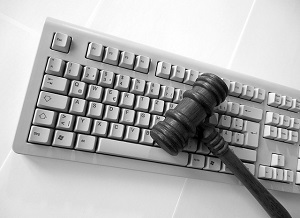How to Write a Legal Memorandum: The Complete Guide
 The purpose of a legal memorandum is to explore a juridical issue and give an impartial assessment on that issue. It is used to develop approaches and to announce arguments. This document explains a particular field of law, analyses given fact model and gives recommendations about a course of action on the basis of the analysis.
The purpose of a legal memorandum is to explore a juridical issue and give an impartial assessment on that issue. It is used to develop approaches and to announce arguments. This document explains a particular field of law, analyses given fact model and gives recommendations about a course of action on the basis of the analysis.
Each legal issue has its own specifications, therefore an essential part of knowing how to write a legal memorandum is minding, every one of them is organised in a distinct way. It’s not a good idea to blindly follow a sample memorandum. The writer should focus on learning the document’s general components and structure instead, apply them to his or her research work in the most effective way for the specific problem.
A legal memorandum is a strictly structured type of writing, which follows definite conventions. It consists of certain standard elements, which are described below.
Heading
The heading identifies its author and the memorandum’s recipient. It also includes date, subject essence and client identification as well.
Summary of the Facts
This portion lists facts which are relevant to the subject. Those are the facts which the author has relied upon while researching and preparing the document. If assumptions have been made, they should be indicated. The facts should be stated clearly and objectively in chronological order. Definitions must be listed to standardise nomenclature for things and persons that are referred to in the legal memorandum. This prevents confusion and inconsistency.
Brief Identification of the Juridical Issues
This section is crucial. The author should briefly define accurate legal issues within the context of the case’s facts. Legal elements, which are necessary to resolution of the issues, should be included. To be more effective the issue statement should be as descriptive and narrow as possible. If there are a few issues to be addressed, they should be listed in the order they will be discussed.
Discussion of the Law Relevant to the Issues
This is the heart of the legal memorandum. In this part a venue is provided for interpreting and analysing the law as well as applying the law to the facts. This section should be divided into separate parts for each specific legal issue displayed in the memorandum. Each part should include introduction, explanation of the corresponding juridical rule, adaptation of the rule to the juridical problem, and conclusion.
Conclusions
The law can be uncertain, which makes it hard to create a defensible conclusion. However, the purpose of the legal memorandum is to give a legible answer, so the author cannot simply claim that the law is unclear. He or she should find a practical solution to avoid such uncertainty. The author should remember that the recipient does not want to be kept in suspense. Therefore a clear, definite and responsive answer should be provided in this portion as soon as possible.
A student should think like a lawyer in order to learn how to write a legal memorandum. Hence, he or she should pay attention to details and separate his or her personal emotions from legal baselines. Research of the corresponding law is essential.